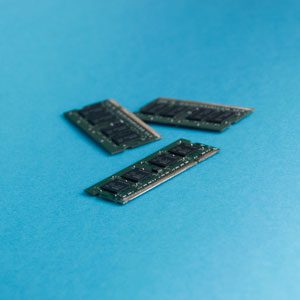

If your Mac is slow, often adding more RAM (also known as memory) can help. Most Macs ship from Apple with a limited amount of RAM but you can buy more and install it yourself. This will speed up your Mac, usually.
How much RAM do you already have
Check to see how much RAM you’ve already got. Here’s how to do it: Under the Apple menu, choose About This Mac. Under Memory, it will tell you how many GB of RAM you have.
Where to buy RAM
We recommend purchasing from Data Memory Systems or Other World Computing. The RAM carries a manufacturer’s warranty. You need to make sure you’re getting the right model of RAM for your Mac, so if you have trouble figuring out on the website, call either company while you’re in front of your computer, and they can tell you which RAM you need.
How to install RAM
If you have a small screwdriver (usually Phillips head) you can usually do it yourself. It is not that hard if you’re a little bit of a handyperson. Go to iFixit and for each Mac they have straightforward instructions about how to install RAM. Follow the instructions and pictures. Make sure you’re inserting it correctly–there is a side up and side down, and it will only go into the slot one way.
After you’ve installed it, turn on your Mac and make sure the computer sees all the RAM by going back to About This Mac (under the Apple menu) and seeing how many GB of RAM the computer recognizes.
RAM problems
Save your old RAM for a month or two. Sometimes RAM is defective. If your computer starts doing weird things, strange shutdowns and other erratic behavior that you can’t seem to figure out, try removing all the RAM and putting in the old RAM, and see if that makes a difference. Most RAM has a warranty, so they’ll replace it for free, if this is the issue.
When you can’t install more RAM
The MacBook Air machines cannot take additional RAM, so you’re stuck with what you’ve got.